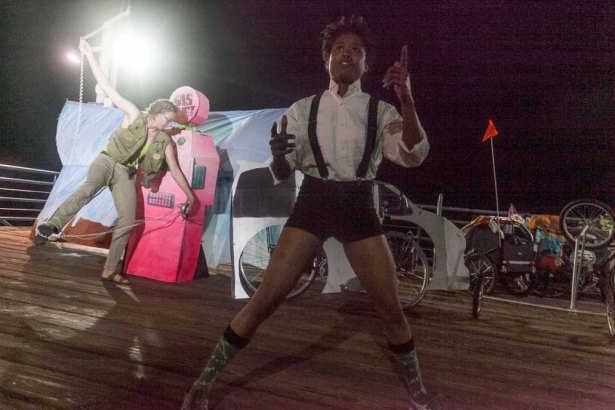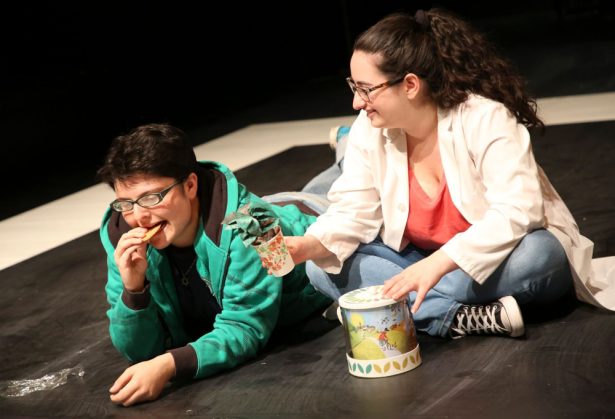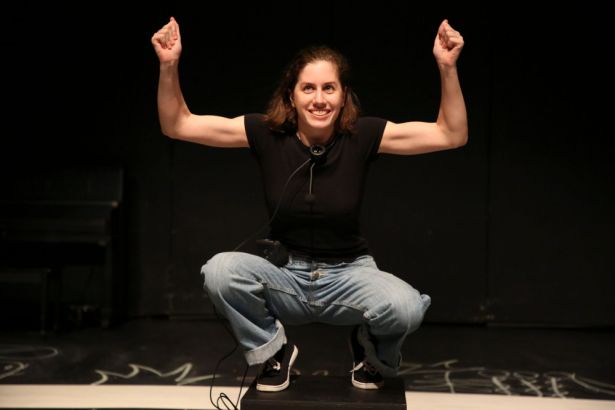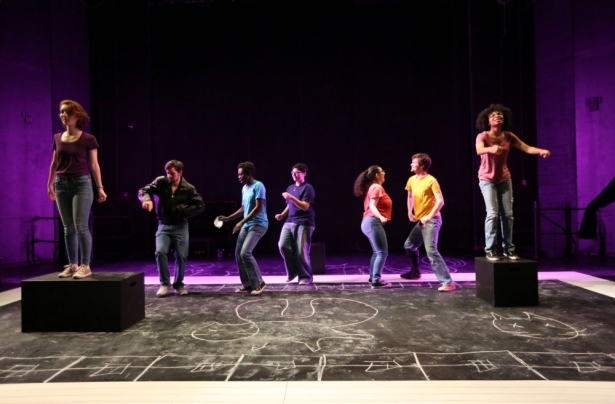This post comes from the Artists and Climate Change Blog
I wasn’t expecting to return to my desert hometown for my PhD research, and didn’t imagine that I would be pregnant. But as I rested in the shade of the only Joshua tree at the hottest and driest of my field sites, I knew that I had made the right decision. Recent studies show that Joshua trees could be gone from areas like Joshua Tree National Park within 100 years – it may be getting too hot too quickly for the tree populations to survive. Unfortunately, this story is not unique to Joshua trees: we may be entering into the sixth major extinction event on this planet, which will have far-reaching consequences for life as we know it. We need radical societal shifts from extraction capitalism and unhinged consumerism towards sustainability. This requires multi-disciplinary approaches to find a path forward, but first we need to get people to care. I believe that art can connect people to difficult concepts at an emotional level, helping to increase public understanding of anthropogenic species loss, and motivate sustainable behavior.
People respond to science-based art when it has a strong personal narrative. By sharing my journey as a scientist and mother, and by researching the deserts of my hometown, I can tell the story of tree loss in a way that moves people to care about what is happening. In my recent publication, we found that art can evoke a powerful emotional response, connecting people to the concepts of climate induced biodiversity loss. People could identify with my story because it had ties to family and a connection to home. I found that we have to unravel the complexities of climate change and species loss through narrative or the science can seem overwhelming and the solutions unapproachable.
Art provides a way to connect the public to science, but it is also a powerful form of research and a pathway for innovative thinking. I work as both an ecologist and an artist, investigating the impacts of climate change on Joshua trees and their above and belowground symbiotic partners. In the branch tops, I study the teeny moths that provide the sole pollination services for Joshua trees, and that use the tree’s developing fruit as a nursery and food source for their young. Underground, I dig into networks of fungi that scavenge and trade soil nutrients and water with the tree’s roots in exchange for plant sugars. These complex and incredibly beautiful species interactions will most likely be impacted by the changing climate, with consequences for Joshua tree survival. Understanding species interdependence and how humans fit within the ecosystem is critical to overcome the widespread belief in human exceptionalism that drives environmental destruction.
Because I work professionally in science and art, my practices are deeply intertwined and feed each other. Art making is unbounded by rules and definition, so the entirety of my research, science included, is art. This echoes the work of eco-art researchers such as the Harrisons or Brandon Balengée, who have blurred the lines of art and science research. Art making gives me permission to ask exploratory questions and to approach my study system in new ways. During these times, I have found great inspiration for science research because I have gained a deeper understanding and relationship with these organisms. For example, while sketching Joshua tree blossoms during pollination season at their hottest locations in the national park, I realized there were no moths to be found. This led to a new direction in my ecological research, and my recently published discoveries linking tree distribution to moth abundance along a changing climate gradient.
Science, however, has a stricter set of methodologies. While also a creative practice, it is often confining and painfully rigorous. Yet science leads to data driven recommendations for policy and management that can address real environmental problems. As a scientist, I have developed an eye for detail and the ability to ask ecologically meaningful questions. I have access to powerful tools such as DNA sequencing, and high-powered microscopy, allowing me to visualize unseen worlds.
I create art through a variety of ways to make these worlds accessible and also to challenge the stereotype of who does science – in this case a mother with a child strapped to her back. My stop motion animation A Joshua Tree Love Story, follows my experience across a desert research expedition with my baby to investigate if the changing climate is impacting tree survival or species interactions. The dire message of tree loss within a human lifetime is highlighted by the paralleled aging of the baby into an old man. Woven through the animation are highly detailed paintings about the Joshua tree-fungi symbiosis and how they change with climate. The paintings match data I collect across elevations, providing a window for the viewer to experience the complexities and beauty of plant-fungal symbiosis.
And the painting process is also scientific! In fact, I have long experimented with using natural pigments, such as wine and fungi, to capture the organisms I study. In this project, I use a novel painting technique where I manipulate the densities and behavior of acrylic paint using oil from the Joshua tree seeds, soap from the tree roots, fire, and alcohol, to create the organic shapes of soil, lacy roots, and fungal networks. This process requires detailed note taking to recreate desired textures and effects. The colors in the painted soils change to reflect levels of nutrients found at my different research sites. These illustrations give another avenue to expand upon in discourse around species loss. The intention was to connect people to species loss through bold imagery and a passionate musical score. I also created a second shorter animation, in response to the first, with a stronger science narrative that more effectively “explains†the research for use in education outreach.
To further encourage conversation around species loss, I have created Hey Jtree, an ongoing participatory art research project and online dating site to meet Joshua trees. As part of my art residency at Joshua Tree National Park, my goal is to bring together artists (53 and growing!) to make art about Joshua tree research, and to invite the public to meet and fall in love with the trees. The website details the ecological information for each tree, shows where they live, features art and music created for each tree, and includes a profile (similar to online dating site profiles). Every tree’s location is given in latitude and longitude. It is also recorded in miles as a “scavenger hunt†and in steps from identifiable locations in the park. People can participate as “citizen artists†by submitting love letters, poetry, music or art to their tree. These will be uploaded to the site, generating a collective shared love and social media following for individual trees. Additional information is provided about ways to care for your tree, how to visit the desert responsibly, and suggestions for political actions.
We will need to explore many untraditional methods to capture public interest and influence environmental policy if we want to sustain life on this planet. The potential for social change through science-art goes far beyond just translating science for public consumption. Multidisciplinary researchers have the potential to turn information into action by connecting these different methodologies to generate creative thinking and learning. This could open new lines of inquiry to engage the public as active participants in the design of a sustainable society.
(Top image: Experimental painting of Joshua trees, roots, and soil with mycorrhizal fungi. Acrylic, Joshua tree seed oil, Joshua tree root soap.)
 ______________________________
Juniper Harrower studies the complexities of species interactions under climate change as an ecologist and artist. Her dissertation research focuses on the interactions between Joshua trees, their soil fungi, and moth pollinators in Joshua Tree National Park. By approaching this research as a science-artist, she hopes to better understand the form and function of the organisms she studies, as well as to share the hidden beauty of these threatened species interactions with others. Through this work she aims to encourage dialogue around social and environmental issues, to contribute to science theory, and to make thoughtful recommendations for policy and management.
Artists and Climate Change is a blog that tracks artistic responses from all disciplines to the problem of climate change. It is both a study about what is being done, and a resource for anyone interested in the subject. Art has the power to reframe the conversation about our environmental crisis so it is inclusive, constructive, and conducive to action. Art can, and should, shape our values and behavior so we are better equipped to face the formidable challenge in front of us.






































